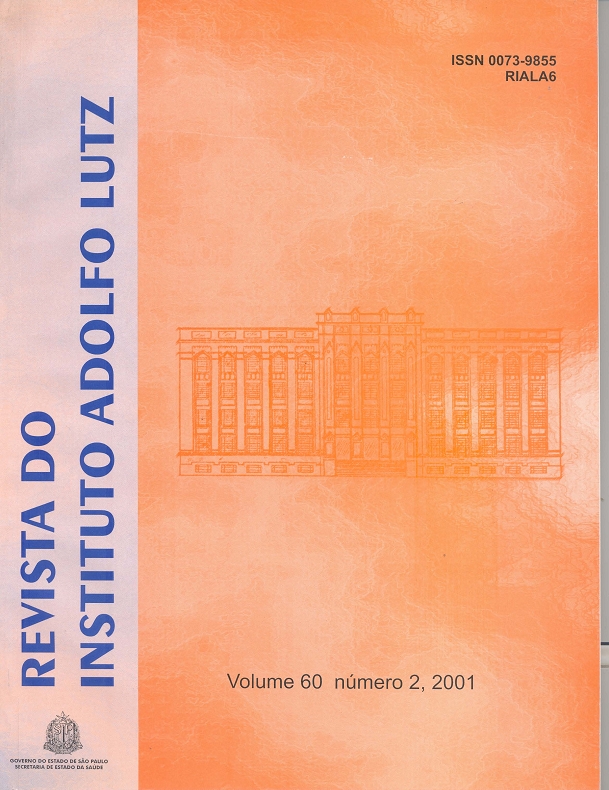Resumen
O objetivo deste estudo foi determinar o teor do princípio ativo e avaliar a inocuidade dérmica e ocular em amostras de produtos contendo 1% de lindano (m/m), que são utilizados para o tratamento de ectoparasitoses: pediculoses e escabioses. Foram analisadas 06 (seis) amostras de produtos: um xampu, um creme, dois sabonetes e duas loções, de diferentes marcas. O teor de lindano das amostras foi realizado de acordo com a Farmacopéia Americana, 1995. Os testes de irritação dérmica e ocular foram realizados de acordo com o método de Draize modificado nas amostras e nas soluções alcoólicas de lindano em diferentes concentrações. Foi efetuado também o teste nas amostras conforme o modo de uso, isto é, de acordo com as instruções de uso fornecidas pelos fabricantes dos produtos analisados. Os resultados obtidos referentes ao teor de lindano mostraram que as amostras analisadas estavam de acordo com o teor especificado no rótulo. Os resultados dos exames toxicológicos das amostras demonstraram que os produtos aplicados de acordo com o modo de uso não evidenciaram danos à pele dos animais testados. Porém, quando submetidos ao teste de irritação dérmica cumulativa, isto é, através de repetidas aplicações do produto, apresentaram irritação, mostrando que o produto utilizado de forma não correta poderá acarretar lesão à pele e conseqüentemente comprometer a saúde do consumidor devido à toxicidade do lindano.
Citas
2. Boffa, M.J; Brough,P.A; Ead,R.D. Lindane neurotoxicity. Br. J. Dermatol., 133:1013, 1995.
3. Clotet, B; Sirera, G.; Ferrandiz, C. Scabies. N. Eng. J. Med., 332(2):611, 1995.
4. Cucê, L.C.; Duarte, A.A. Hexacloro de gama benzeno – lindano. F. Med., 96(3):149-51, 1988.
5. Downs, A. Comparing antiscabies treatments, Arch. Dermatol., 133(4):526, 1997.
6. Eichensfield,L.F.; Colon-Fontanez, F. Concise reviews of pediatric infectious diseases – Treatment of head lice. Pediatr. Infect. Dis. J., 17(5):419-22, 1998.
7. Elgart, M.L. A risk-benefit assessment of reagents used in the tratment of scabies. Drug. Saf., 14(6):386-93, 1996.
8. Elston, D.M. What’s Eating You? Pediculus humanus (head louse and body louse), Cutis, 63(5):259-64, 1999.
9. Finkelstein, L.E.; Mendelson, M.H. Moore, A.V. Stopping the spread of scabies. Am. J. Nurs., 97(10):68-9, 1997.
10. Fischer, T. Lindane toxicity in a 24-year-old woman. Ann. Emerg. Med., 24(5):972-4, 1994.
11. Instituto Nacional de Controle da Qualidade em Saúde-INCQS/FIOCRUZ. Manual da Qualidade – Ensaio de irritação cutânea primária; Ensaio de irritação cutânea repetida; Ensaio de irritação ocular. Rio de Janeiro, 1987.
12. Mendonça, I.R.S.M.; Hernandez, O,E.N.; Perdomo, J.G. Inquérito epidemiológico das dermatoses numa instituição infantil., An. Acad. Nac. Med., 155(2):85-8, 1995.
13. Murahovschi, J.; Rodrigues, E.M.; Teruya, K.M. et al. Avaliação da eficácia e tolerabilidade do lindano 1% no tratamento de escabiose e pediculose. Rev. Paul. Pediatr., 6(20):25-7, 1988.
14. Obadia, I. Pediculose de couro cabeludo. Tratamento com o Gamahexaclorociclohexano (Lindane). Rev. Bras. Med., 39(11):709-12, 1982.
15. Oliveira Filho, J. et al. Casuística do ambulatório de dermatologia da Faculdade de Medicina de Santo Amaro no Período de cinco anos. J. Bras. Med., 68(5):139-44, 1995.
16. Pereira, V.P. Borenstein, M.S.; Erdmann, A.L. Experiência de atenção de enfermagem no controle da pediculose num macro hospital psiquiátrico estatal, durante 10 anos. Rev. Bras. Enferm., Brasília, 47(1):20-6, 1994.
17. Rey, L. Acarí: Os ácaros da escabiose e de outras dermatoses. In: REY, L. Parasitologia. Parasitos e doenças parasitárias do homem nas Américas e na África. 2ª ed. Rio de Janeiro, Editora Guanabara Koogan S.A., 1991, p.657-61.
18. Rey, L. Anopluros: Os piolhos sugadores. In: REY, L. Parasitologia. Parasitos e doenças parasitárias do homem nas Américas e na África. 2ª ed. Rio de Janeiro, Editora Guanabara Koogan SA., 1991, p.645-8.
19. Solomon, B.A.; Haut, S.R.; Carr, E.M. et al. Neurotoxic reaction to lindane in an HIV-seropositive patient. An old medication’s new problem. J. Fam. Pract., 40(3):291-6, 1995
20. Spach, D.H.; Fritsche, T.R. Scabies. N. Engl. J. Med., 332(2):612, 1995.
21. Subercaseaux, M.L.P.C.; Trueba, M.S.Z. Pediculosis y escabiosis. Bol. Esc. Med., 25:40-3, 1996.
22. United States Pharmacopeia 23 ed. Rockville, United States Pharmacopeial Convention, 892-3, 1995.

Esta obra está bajo una licencia internacional Creative Commons Atribución 4.0.
Derechos de autor 2021 Revista del Instituto Adolfo Lutz
